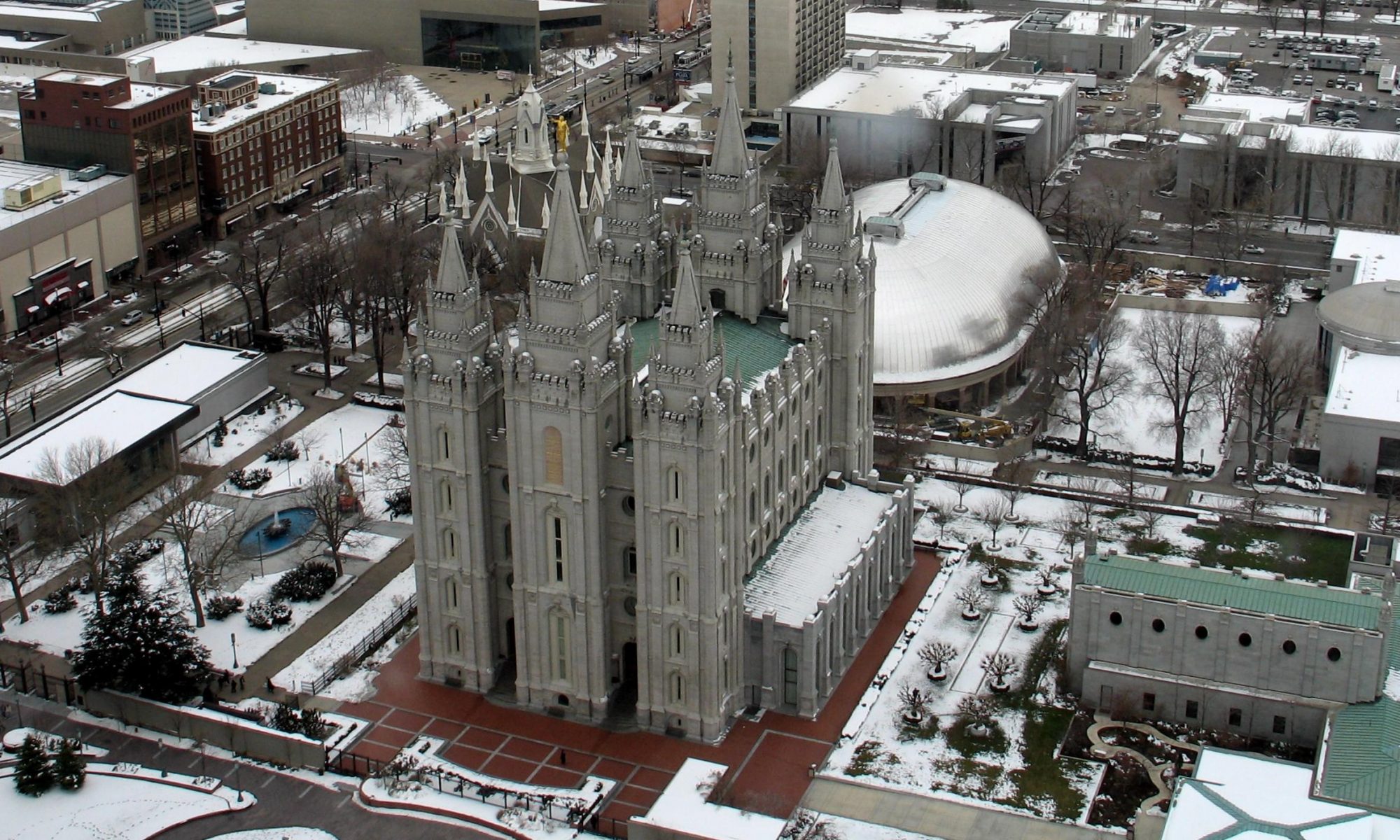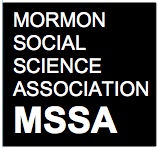The 2013 Autumn Newsletter of the MSSA is now available.
Ask An Expert: Research on Home Teaching?
Q: Are you aware of any studies or research relating to LDS home teaching, its history, relationship to similar home visitation that John Calvin instituted, or setting it in a sociological or anthropological background?
A: We received three responses from members of the MSSA.
Benjamin Pykles noted five publications in Mormon History on home teaching at the BYU library, including:
- Home Teaching–Attempts by the Latter-day Saints to Establish an Effective Program during the Nineteenth Century by Phelps, Gary L. 1975
- Changes in the Numbers and the Priesthood Affiliation of the Men Used as Ward Teachers in The Church of Jesus Christ of Latter-day Saints, 1908-1922 by Israelsen, Vernon L. 1975
- A Documentary History of the Lord’s Way of Watching Over the Church by the Priesthood Through the Ages by Anderson, Rex A. 1974
- Elijah F. Sheets : The Half-century Bishop by Pace, D. Gene 1985
- Home Teaching by Hartley, William G. 2000
Jeffery Johnson recommended a book with important research on the history of home teaching (formerly called “Block Teaching”):
- My Fellow Servants: Essays on the History of the Priesthood, by William G. Hartley, (Provo, Utah: BYU Studies, 2010)
Armand Mauss suggested that you also contact Reid Neilson or another librarian at the LDS Library/Archives. You can ask a librarian here. He also suggested you consider contacting a member of the Church Research Information Division.
A House Full of Females: Faith and Family in Nineteenth-Century Mormon Diaries – Glenn Vernon Lecture at SSSR 2013
If you need another reason to attend the 2013 Society for the Scientific Study of Religion meetings in Boston, where the MSSA also meets, attending the Glenn Vernon Lecture is a pretty good one. The Glenn Vernon Lecture will be given by Laurel Thatcher Ulrich, the Pulitzer-prize winning author and Harvard scholar. Her lecture is titled, “A House Full of Females: Faith and Family in Nineteenth-Century Mormon Diaries.” It promises to be an excellent presentation.
Case study on Young Single Adult Ward in Utah available
Working with the Faith Communities Today, a case study was recently published that details the inner workings of a Young Single Adult Ward in Herriman, UT. You can download the report here.
Leonard J. Arrington lecture – September 19th – Gregory A. Prince
The latest Leonard J. Arrington lecture by Gregory A. Prince has been announced. See the full announcement here.
2013 – Spring Newsletter
The 2013 Spring Newsletter of the MSSA is now available.
Research Information Division hiring
The Research Information Division of the Correlation Department is hiring. The position announcement can be viewed here.
Ask An Expert: Relationships Between English Quakers and Mormons in 19th Century England?
Q: Having recently read Johnnie Glad’s study of the Latter Day Saints’ missions to Norway in the C19th I have become intrigued by the idea that the English Quakers who advised and supported the tiny number of Norwegian Friends in the C19th may have been aware of the LDS missions both in Norway and in England. I would therefore like to ask if there is evidence of LDS-Quaker interactions or indeed, of any LDS missions in North-east England in the C19th. There are several LDS churches in the North-east at present, but I have found it difficult to locate relevant archival material in order to date their congregations. I am trying to gain a sense of whether Quakers viewed the LDS as a rival both in Norway and in the NE (as they may have seen Methodists some decades earlier) or if they were unlikely to have known much about them (although I find this less likely, at least in the Norwegian context, as the LDS were in Stavanger, Norway at around the same time as the Quakers).
A: This was a tricky question for the MSSA as it is more historical than social scientific, but we had some excellent responses.
First, Benjamin Pykles noted that there is a very nice resource on the LDS Church’s website for historical queries: Ask a Librarian. For individuals asking historical questions in the future, this is a good resource.
Second, Michael Nielsen contacted several individuals who are better connected on the historical side of things (Michael Van Wagenen and Matt Bowman) and here was the response from Matt Bowman:
Hey, folks – Mormon missiology is a sadly underdeveloped field. I don’t know this off the top of my head either, alas; the people it seems to me would be best to ask are David Whittaker (who just retired as manager of the Mormon collections in the BYU library’s special collections) or Ron Esplin (director of the Joseph Smith Papers documentary editing project). Whittaker’s done the most work on early Mormon missions of anybody I know, and he and Esplin co-wrote a history of the 1837-1841 mission of several Mormon leaders to the British Isles, which was both the first Mormon mission to the country and wildly successful. As I said, Whittaker just retired; the search to replace him is underway right now. His email at BYU was david_whittaker@byu.edu; I don’t know if he still checks it or not, alas. Esplin’s email, I believe, is rkesplin@ldschurch.org.
Finally, another MSSA member, Shawn Bennion, received a very helpful response from Michael Bennion, who provided a number of very useful links:
- http://www.naha.stolaf.edu/pubs/nas/volume21/vol21_5.html (links to a specific page of Mario S. De Pellis’s book Cleng Peerson and the Cummunitarian Background of Norwegian Immigration
- http://archiver.rootsweb.ancestry.com/th/read/NORWAY/2012-09/1347308233 (links to an online forum discussion about this issue)
-
http://secure.peterlang.com/download/datasheet/41552/datasheet_60179.pdf (links to a book titled The Norwegian Experience with Mormonism, 1842-1920
-
http://lib.byu.edu/digital/mmd/readings/europe_readings.php (links to a list of Mormon Missionary Diaries from Europe)
As well as a citation to a book that should be of help:
- William Mulder, Homeward to Zion: The Mormon Migration from Scandinavia, (Minneapolis, MN: University of Minnesota Press, 1957).
While the MSSA may not have answered the question directly, hopefully this will provide some useful directions for finding out more information.
Historian/Writer Job with Joseph Smith Papers Project
There is a job opening for a historian/writer position with the Joseph Smith Papers Project. Full announcement can be viewed here.
Ask an Expert: missionary markets and Mormon occupations
Q: In the 1973 missionary system The Uniform System for Teaching Families, Tracting approaches included “business contacting,” which included going to businesses and asking to speak with “managers, directors, and other executive and supervisory personnel,” to make appointments to give a family home evening to the families of these men in their homes. In addition, missionaries were challenged to “seek invitations to speak to men’s service and civic organizations.” Based on this information, I have two questions:
- Are there any studies that focus on the marketing targets of Mormon missionary work, including which segments of each market are most targeted?
- Does any data exist that breaks down the occupations of Mormons, both of converts and non-converts?
A: The answer to the first question is pretty straightforward: No. Of course, that is only referring to published studies. It is possible that the researchers working for the LDS Church have information on this question, but that information has not been made public and a request would have to be directed toward them to find out if they: (a) have that information, and (b) would share it.
There is some data available on the occupations of Mormons. Two members of the MSSA wrote in with suggestions.
Andrew Miles noted, “Though it probably won’t be helpful given small sample sizes of Mormons, there are a few nationally representative data sets that have a few Mormons in them, as well as occupation information. The Health and Retirement Study will get older/retired Mormons (about 100 or so), and the National Longitudinal Study of Youth (1979 cohort) has somewhere between 50-100 as well. You might also look at the National Study of Youth and Religion, which has some Mormons in it and probably has occupation data as well. None of these data have information about non-converts, nor, I think do they provide information about whether or not someone is a convert (though you might be able to deduce it from changing religious affiliation, since all are longitudinal).”
Matthew Butler suggested that IPUMS International would be a good source to identify Mormon occupations internationally (although you will not be able to identify convert status):
https://international.ipums.org/international/
The detailed codes for RELIG are here (Mormons are 6015)
https://international.ipums.org/international-action/variables/RELIG#codes_tab
From a quick glance it appears that the following country-years have Mormon religious identification and occupation:
- Argentina 2001
- Brazil 1991, 2000
- Chile 2002
- Mexico 2000, 2010
- Philippines 1990, 2000
- South Africa 1996, 2001
Finally, there is some data in the General Social Survey on Mormons and occupational codes. While it requires some data manipulation and familiarity with the data set, Mormons can be identified (found in variable “OTHER”, code is 64) and some degree of conversion can as well (use OTH16 and the same code 64). The occupational codes aren’t included for every Mormon, but there are some. Ryan Cragun ran the occupational codes from 1970 (OCC) on various categories of Mormons (lifetime, convert, former, and adult but convert status not known) and created a spreadsheet with the resulting information. The spreadsheet doesn’t include all of the Mormons in the GSS, as not all of them have a code for the 1970 occupation categories; more have it for the 1980 occupational categories (OCC80). You can see the spreadsheet here and a PDF version here.

